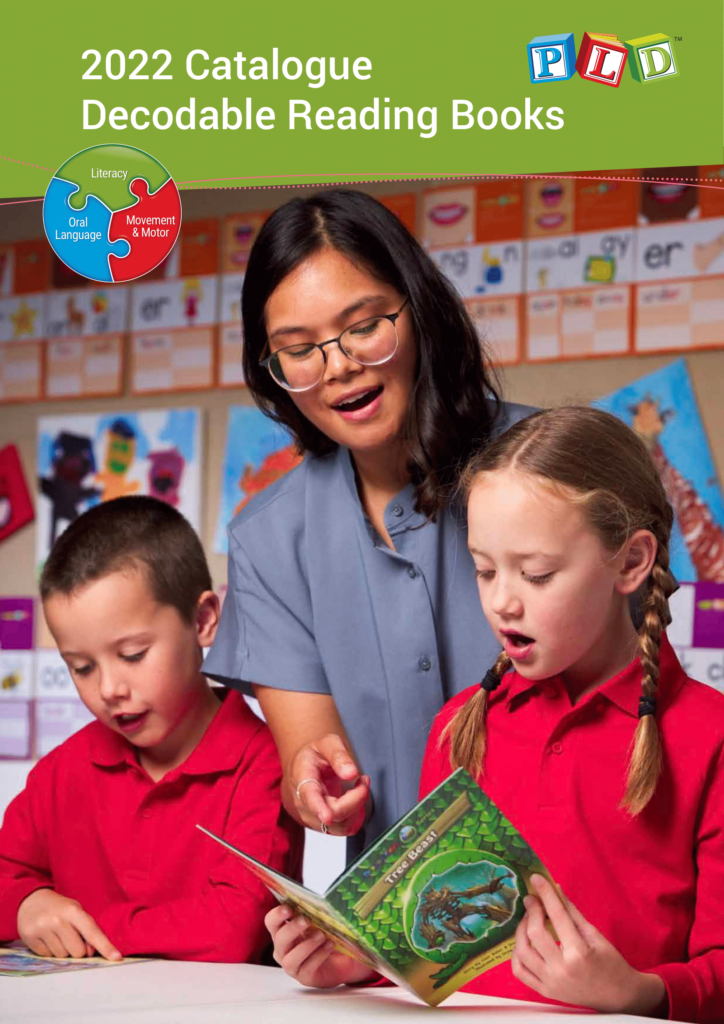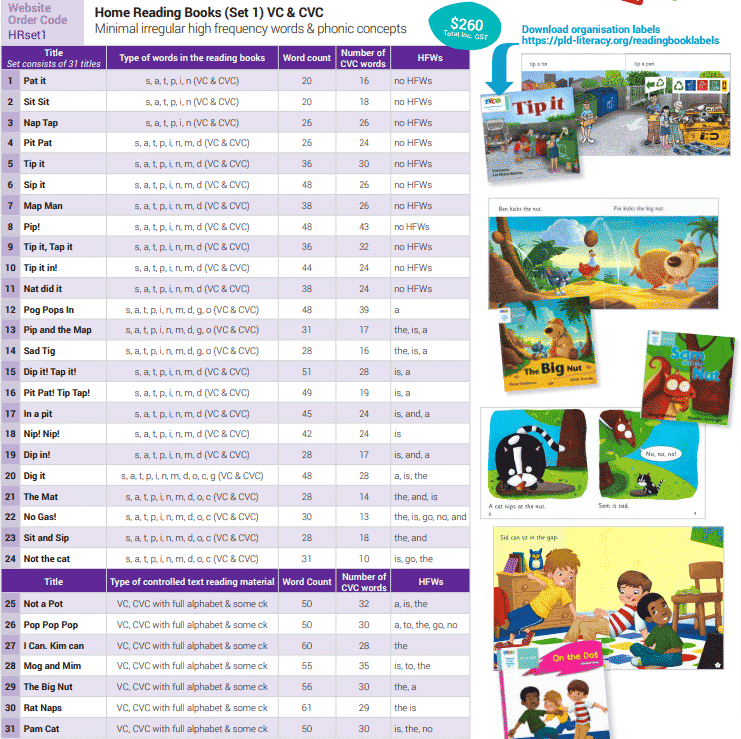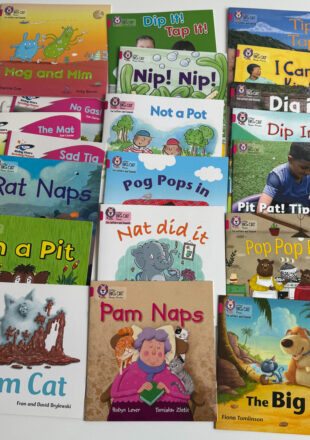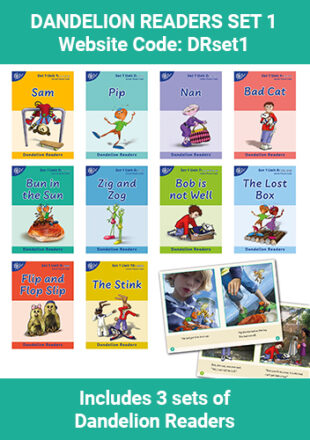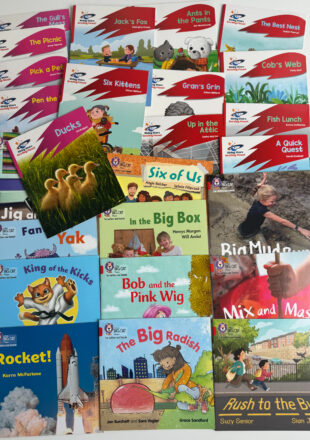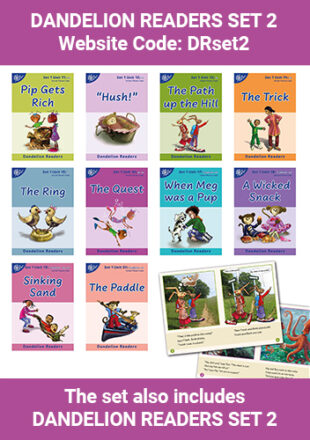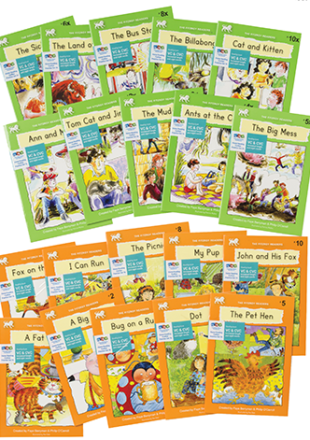PLD’s decodable readers align with PLD’s Structured Synthetic Phonics (SSP) sequence. The type of words, word count, and amount of HFWs gradually become more complex as more phonic concepts are introduced. It is important to include decodable readers as part of your SSP program. This article explains why.
Set 1 of the Home and Targeted Group Reading books have been created for Foundation students in Semester 1 (typically Term 2) and feature VC and CVC words. As you can see from the chart below, the set starts with VC and CVC words with no HFWs. Gradually, as new phonic concepts are introduced, length progressively increases. The first 11 books contain no HFWs and focus upon approximately a quarter of the alphabet sounds. The PLD decodable readers in this set have been specifically chosen from the Collins Big Cat Phonics, Rising Stars, and Fitzroy Readers ranges.
How to Determine if Students Are Ready for PLD Decodable Reading Books
PLD recommends that once pre-literacy instruction (alphabet sounds, lowercase letter formation, phonemic awareness: blending & segmentation) has been explicitly taught in Term 1, it is appropriate to screen students in Week 10 using the Foundation Early Reading Screen. Based on the results of the screening, decodable books can be assigned to Foundation students.

- Top-Up Home Reading books have been designed to extend or supplement the books contained within our Home Reading Books. Each reading book contains decodable text and should align with the sounds and letters being instructed within the classroom.
- Set 2 of the Home and Targeted Group Reading books have been created for Semester 2 and feature CVC, CCVC, and CVCC words. Prior to allocating students these sets, screen again using the Foundation Early Reading Screen (typically in Week 6 of Term 3 and 4).
Structured Synthetic Phonics (SSP) is at the heart of PLD’s offering. Every resource we create is intended to scaffold, support, and extend students’ SSP knowledge and skills. Our latest release, Sound Wall Charts, are a special resource that will bring to life the PLD teaching sequences and serve as a visual representation of PLD’s SSP sequence. Our teaching sequences, which are available for download for every year level from Early Years to Year 6, form the backbone of our evidence-based programs which have been formulated to promote literacy development. PLD’s new Sound Wall Charts align directly with our teaching sequences and will further support the explicit teaching of SSP.
Year 1 PLD Decodable Reading Book Sets
By the end of Year 1, students should be ready to progress from decodable readers and be able to accurately and fluently read Stage 1 words and a percentage of Stage 2 words. To facilitate this skill development, PLD recommends the continuation of decodable readers throughout Year 1:
- Set 3 of the Home Reading books, for Semester 1, feature Stage 1 and limited Stage 2 phonic concepts. Prior to allocating students these books, screen students (typically in Week 2 of Term 1 and Term 2). Download the screen HERE.
- Set 4 of the Home Reading books, for Semester 2, feature Stage 1 and Stage 2 phonic concepts with increased length. Prior to allocating these books, screen students again (typically in Week 2 of Term 3 and Term). Download the screen HERE.
What if Students Need Decodable Material Beyond Year 1?
A proportion of students will require PLD decodable readers for longer than others. This group of students may have presented at school with speech and/or language delays, or a history of multiple ear infections. They may have family members who have experienced literacy and learning difficulties (and hence present with a genetic predisposition to literacy difficulties) etc. PLD provides three additional catch-up reading book sets for this purpose.
How do I Screen Students to Find Appropriate Reading Levels?
- If students have read all of Home Readers – Set 1 the additional set of 20 Home Reader Further Practise – Set 1 may be appropriate. They are also suitable for students who are still acquiring accuracy and automaticity at Exercise 2 level on the PLD Early Reading Screen in the Foundation Screening & Tracking Manual.
- If students have read all of Home Readers – Set 2 the additional set of 20 Home Reader Further Practise – Set 2 may be appropriate. They are also suitable for students who are still acquiring accuracy and automaticity at Exercise 3, 4 and 5 on the PLD Early Reading Screen in the Foundation Screening & Tracking Manual.
- If students have read all of the Home Readers – Set 3 and Home Readers – Set 4 the additional 20 Home Readers Further Practise – Set 3 and 4 may be appropriate. They are also suitable for students who are still acquiring accuracy and automaticity at Exercise 5 and 6 on the PLD Early Reading Screen in the Year 1 & 2 Screening & Tracking Manual.
Research repeatedly reports that the gains are greatest in the initial years of schooling when students are first learning to read use decodable texts. In terms of allocating reading books and tracking the progress within each school term, the Early Reading Screens are recommended. The screen analyses word accuracy (i.e. percentage correct at each level) and automaticity (i.e. reading strategies observed).
- If below 90% accuracy and blending each letter at ‘Exercise 2 CVC Words’ the following sets are recommended: HRset1, HRset1b, SRmulti1.
- If below 90% accuracy and blending each letter at ‘Exercise 3 and 4’ the following sets are recommended: HRset2, HRset2b, SRmulti2.
- If below 90% accuracy and blending each letter at ‘Exercise 5’ the following sets are recommended: HRset3, HRset34b.
- If below 90% accuracy and blending each letter at ‘Exercise 6’ the following sets are recommended: HRset4, HRset34b.
We Use PM Readers, is there a PLD-to-PM Reading Level Correlation Available?
In short, the two pedagogies are based on opposing educational theories and are not compatible. Matching structured synthetic phonic approaches with whole-language processes, such as PM Benchmarking, is incredibly difficult as the approaches to reading are vastly different. The best PLD can do is direct you to Fitzroy Reader’s comparison to PM Benchmarking chart.
It is very challenging to navigate how schools start to phase outdated processes and start implementing an evidence-based approach such as SSP. One of the PLD blogs discusses this issue and provides a range of suggestions. (e.g. in the next school year aim for 50% PM Benchmarking and 50% decodables). This would mean two PM Benchmark readers and two decodable readers per week. Read this blog HERE.



 print
print